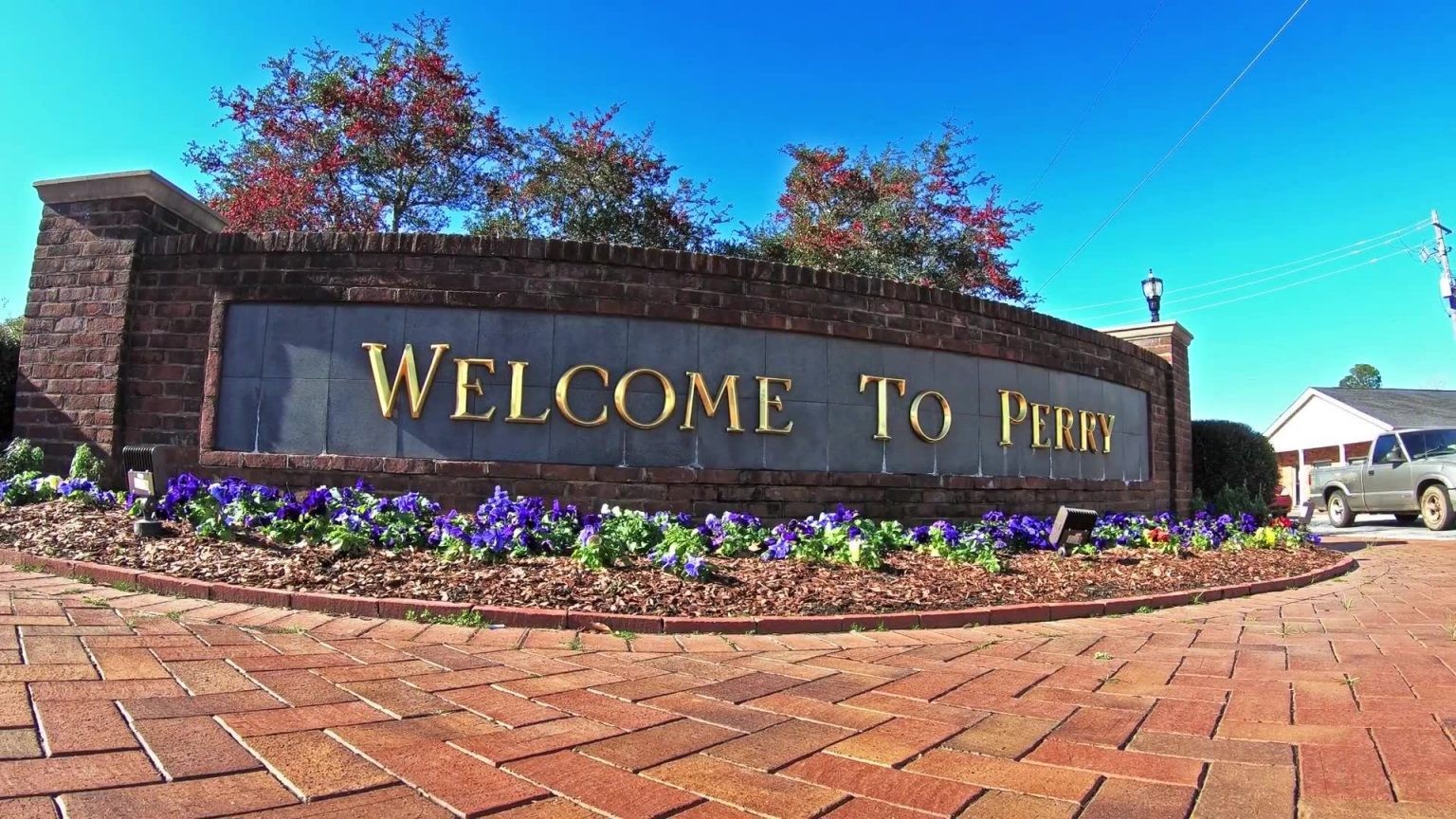Our city is rich in history and places a premium on smart growth resulting in quality of life, engagement, and stability.
Have something to add? Please contact us for posting consideration.
About Perry
The City of Perry was founded in 1824 and named in honor of Oliver Hazard Perry, a War of 1812 hero. Perry began as an antebellum industry, including gristmills, sawmills, and cotton gins. Perry has been able to capitalize on its proximity to Robins Air Force Base, excellent schools, unique downtown, high quality of life, and location in transforming from a small town to a vibrant and growing community of over 21,000 people. As a hub of state and federal highways, home of the Georgia National Fairgrounds & Agricenter, and events like the Dogwood Festival, Food Truck Fridays, the Perry Music Festival, and the annual Perry Buzzard Drop, Perry is truly where Georgia comes together.

The Early Years (1824-1912)
When Houston County was formed (1821), a small settlement near current-day Perry named Wattsville was designated as the county seat, given its central location in the county. That small town was renamed Perry and formally incorporated in 1824 as the first municipality in Houston County.
The original city limits of Perry formed a rough circle with a half-mile radius from the courthouse square, except for where Big Indian Creek formed a natural boundary for the city.
Perry became the center of business for the new county, attracting lawyers, teachers, and store owners. Several small industries also grew around Perry, including gristmills, sawmills, and cotton gins.
The first Perry Hotel opened in 1870 to serve travelers along a stagecoach route. Perry's population stayed relatively small throughout these early years, with on 836 people in the 1870 Census. Significant growth would not come to the Perry area until the 20th century.
A Growing Center of Business (1912-1945)
The City of Perry's historic downtown began to form into its current shape throughout the 1910s and 1920s, with a number of small one- and two-story shops and businesses built along Carroll Street between Ball Street and Washington Street. The spread of new technology into rural Houston County facilitated the formation of downtown Perry, particularly with the first electric lighting in 1912.
Throughout the 1920s, Perry's downtown continued to prosper, and the New Perry Hotel was built in 1925 in place of the original one to serve tourists passing through town in motor vehicles. The 1920s and 1930s saw sustained population growth, with the population reaching 1,542 people by the 1940 Census enumeration.
The Post-War Boom (1945-1990)
In June 1941, a regional effort succeeded in gaining approval from the U.S. War Department to construct a new air depot facility near the community of Wellston, located approximately halfway between Perry and Macon. The facility would later be named Robins Air Force Base in honor of General Augustine Warner Robins. The base would go on to employ between 15,000 and 25,000 individuals serving as the largest employer in Middle Georgia and a major economic driver for Houston County and the City of Perry.
Between 1940 and 1960, the population of the City of Perry quadrupled. Coupled with the completion of Interstate 75 through Perry in the 1960s, much of Houston County developed into a modern American suburban community. Perry continued to steadily grow through 1990 buoyed by industries like Frito Lay, Perdue Farms, and Interfor.
In 1990, Perry cemented its status as a center of agriculture for rural south and central Georgia with the establishment of the Georgia National Fairgrounds and Agricenter. The facility was completed for a total cost of $26.2 million and today is host to over 260 annual events, including the Georgia National Fair, which regularly brings more than a half-million people to Perry each October.
A Prosperous, Modern Town Center (1990-2020)
Perry's population growth leveled off in the 1990s before resuming in the 2000s and 2010s. Perry undertook several annexations to bring new areas into the city limits while also investing in the development of the downtown area and community at large. Perry Parkway, on the eastern side of town, was developed through the 1990s and early 2000s, drawing some activity away from the downtown area while spurring new development on the outskirts of the city.
The City of Perry began to intensify its focus on revitalizing the downtown area using a variety of state and local incentives for new development. Local public investments were also made by the City of Perry to improve the aesthetics of the downtown area. Perry secured the old National Guard Armory building in 2003 for redevelopment into the Perry Arts Center. The Perry Downtown Development Authority invested in greenspace improvements at Garden Park in 2004, and the City acquired the land for Rotary Centennial Park and the Big Indian Creek Waterway Trails in 2008.
These investments in the public infrastructure, combined with local incentives have begun to encourage the growth of new businesses in Perry. The City has continued to encourage this growth with new events such as the popular Food Truck Friday series that began in 2018.
Within Middle Georgia, Perry now has one of the more vibrant downtown areas hosting numerous events that bring the community together. In this context, the City is seeking to build on its past progress for an even greater future.




















































